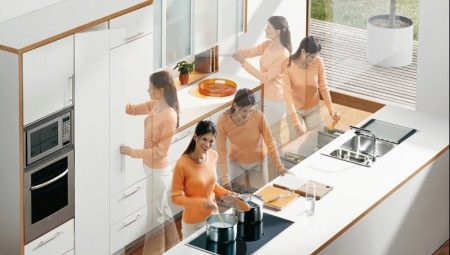Ergonomics of the kitchen - an important component of comfort in the use of interior space. By following the rules, you can ensure the convenience of operating household appliances, accurately calculate the height and width of the cabinets so that all the necessary supplies and appliances are at hand. The principles of planning have been known for a long time, but far from always they can be applied immediately. If the repair raises the question of how to properly arrange furniture and arrange equipment, it is worth considering how ergonomic the already used kitchen layout is.
When arranging space, the owners of houses and apartments have to study many aspects that are usually overlooked: what sizes of the headset are considered ergonomic, how best to store things, products and equipment. If the kitchen is designed with ergonomics in mind, these problems will definitely not arise during its operation.
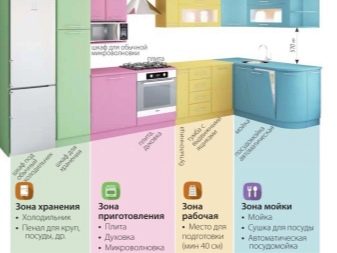
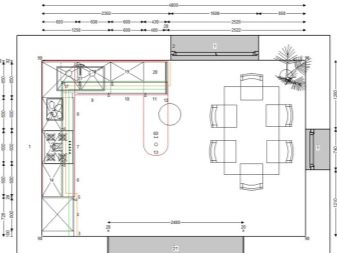
Basic principles
The principles of ergonomics of the kitchen imply a clear division of the room into separate zones. A traditional triangle, consisting of a sink, stove or hob and refrigerator, is considered a classic. But if the kitchen worktop is at the forefront, the refrigerator can even be taken out to other rooms.
When planning a kitchen, first of all, the location of the most significant elements of the situation is determined, the rest of the plan is secondary.
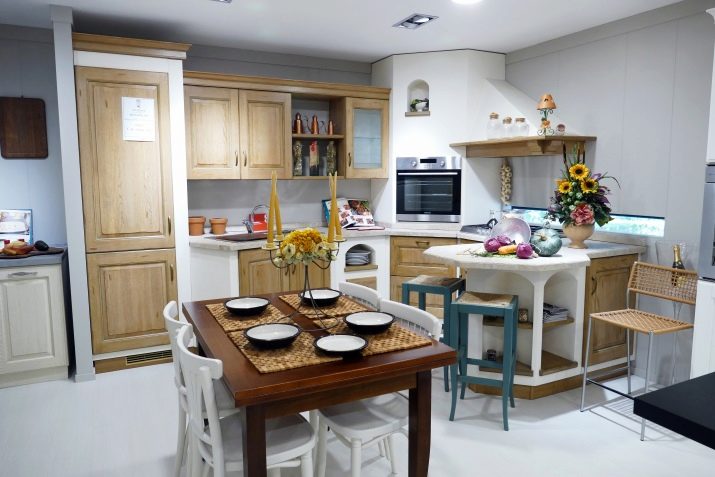
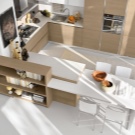
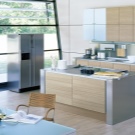
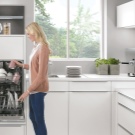
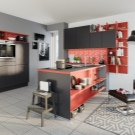
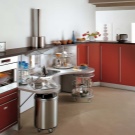
An ergonomic kitchen is built on the basis of an equilateral triangle, where the zones are located in a strictly defined way.
- Hot. A gas or electric stove, hob is installed here. If sources of the main supply of resources are used, this point becomes the main one.
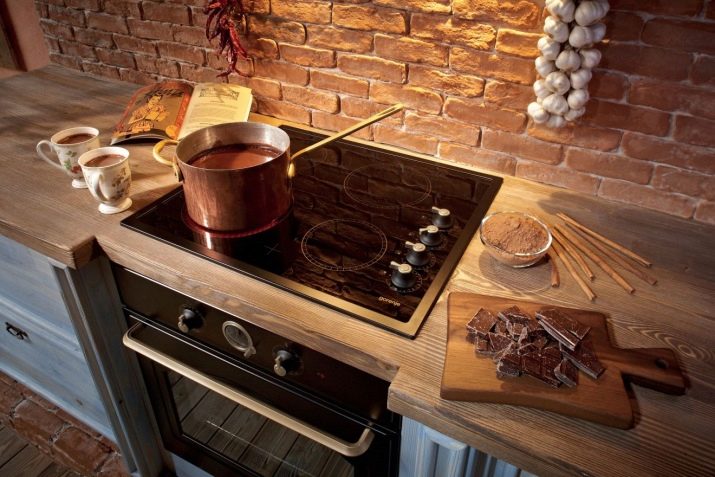
- "Wet." It houses a sink, washing machine or dishwasher, water pipes and sewage.
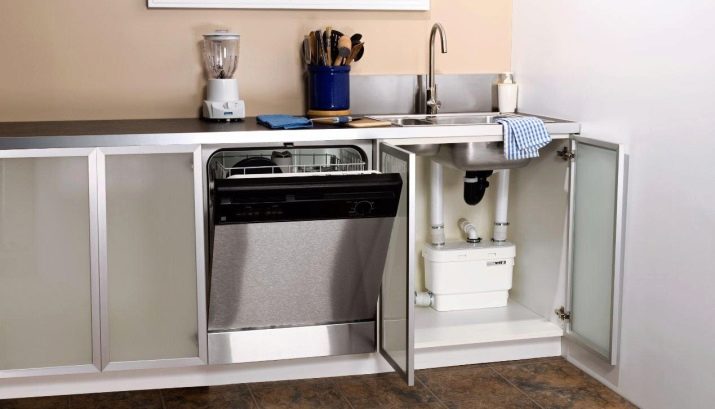
- "Cold." A refrigerated storage system, a refrigeration unit, a freezer are necessary for long-term preservation of food freshness. They are placed close to electrical outlets, away from heat sources.
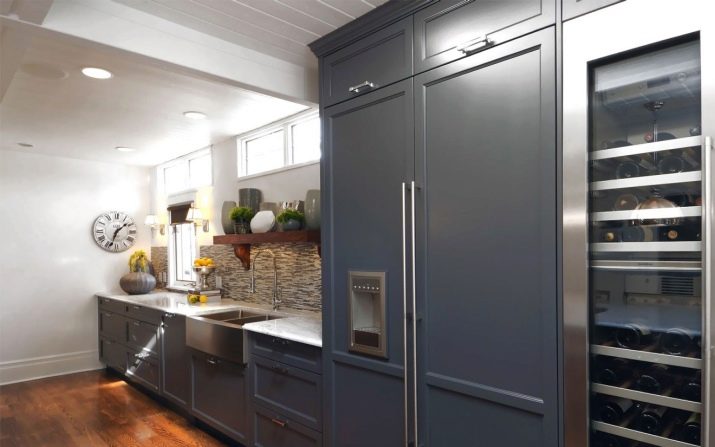
Getting a working triangle is possible in almost any type of layout: with the island, in a linear or two-row version, in L-shaped and U-shaped configurations. It is worth considering that for gas stoves there is a rule of location 7 cm from the surface of the walls - it is better not to place them in a corner, the loss of area will be too large. In addition, all splashes of grease and dirt will spread randomly, and the cleaning area will be much larger.
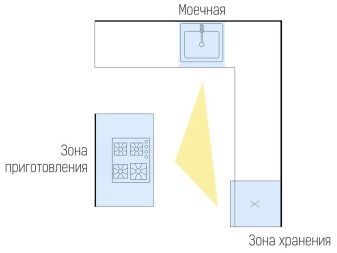

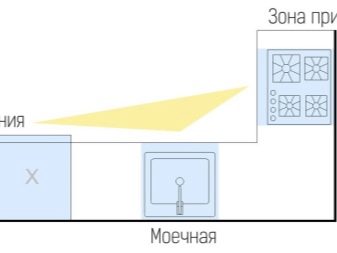

When planning an easy-to-use kitchen, even the ergonomics of plumbing is important. The high spout of the mixer and the deep bowl make it possible to reduce water spray.
The washing distance from the riser can not be more than 2.5 m.
The optimal distance between all the triangle blocks in the corner kitchen (with a sink in the center) is 60 cm. In a linear layout between the sink, refrigerator and stove, cabinets with separate countertops are installed. With double-row placement of the modules, the headset needs to be placed at a distance of 120 cm. A refrigerator is placed along the opposite wall.
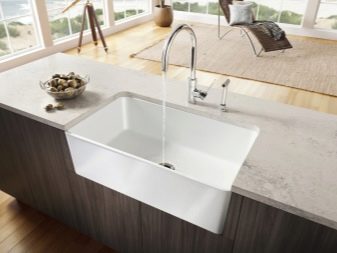
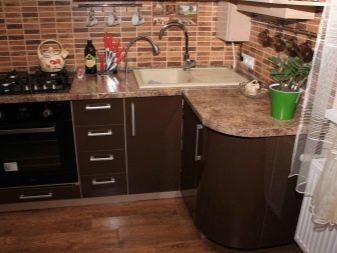
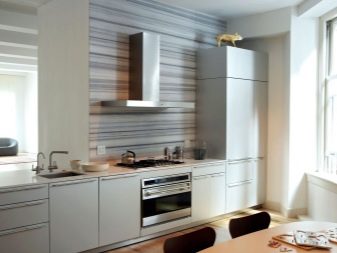
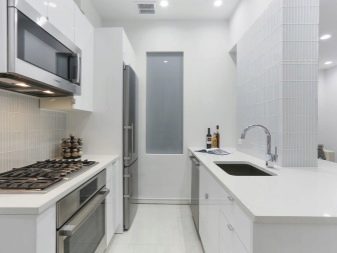
Ergonomic dimensions
There is such a thing as ergonomic dimensions of furniture. They allow you to make all the elements of the layout quite comfortable and safe to use. So, the hood must be placed at a strictly defined height from the stove or hob. To effectively remove heat and steam, a distance of 75 cm is required.
The height of the work surfaces also matters.
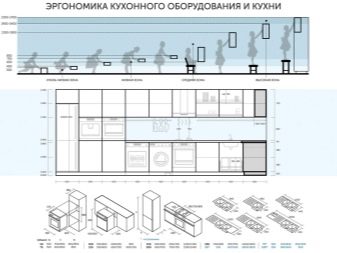

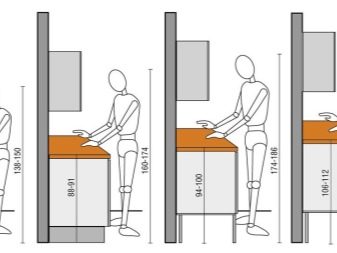
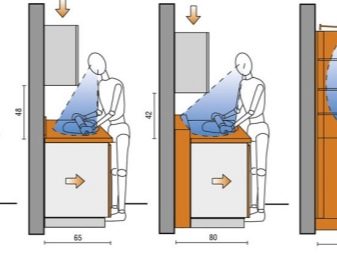
The tabletops in the headset and in separate cabinets are located in the range of 85-110 cm - it is worth focusing primarily on the growth of the hostess, the plane should be 15 cm below the elbow.
The dining table has the following options:
- height from floor to countertop 75 cm;
- location 90 cm from the working area and cooking surfaces;
- the distance from the sink is at least 100 cm.
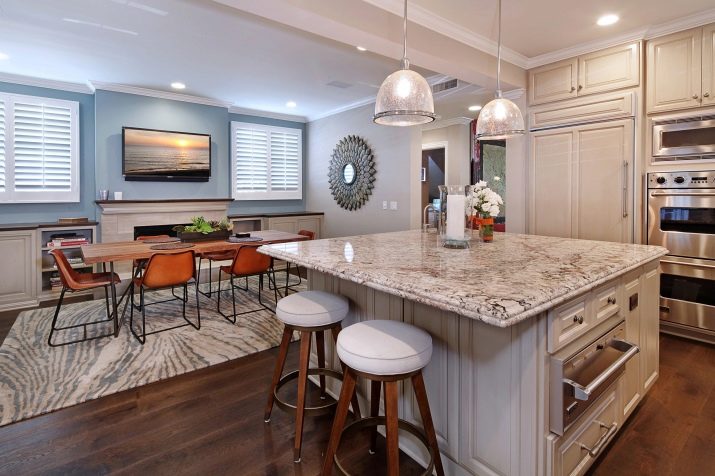
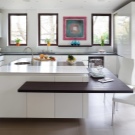
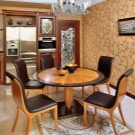
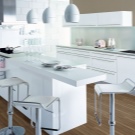
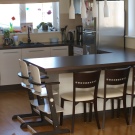
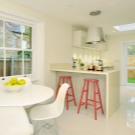
The mounted unit is parallel to the bottom row. It is necessary to maintain at least 50 cm between the countertop and the bottom of the cabinets.
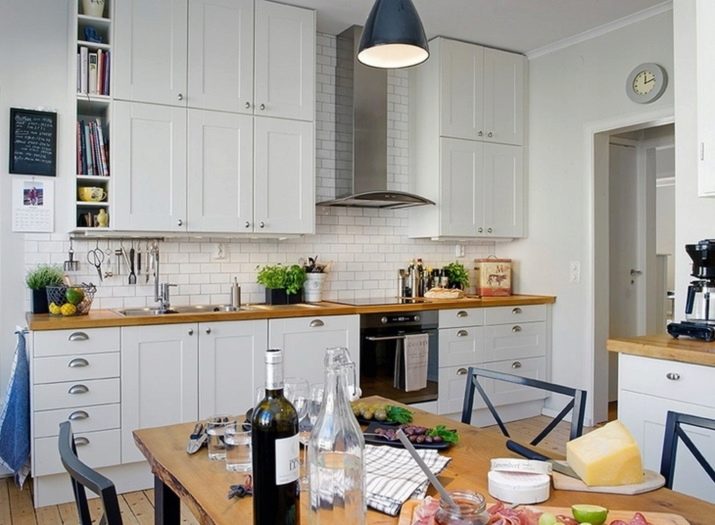
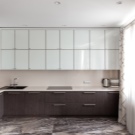
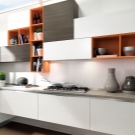

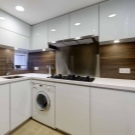
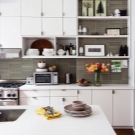
Ergonomic parameters are always calculated on all planes. The optimum depth of the countertop is in the range from 60 to 80 cm, in a very small kitchen you can find options for 40 and 50 cm. The sink and stove or electrical outlets can not be placed closer than 50 cm from each other.
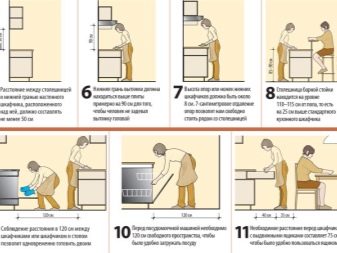
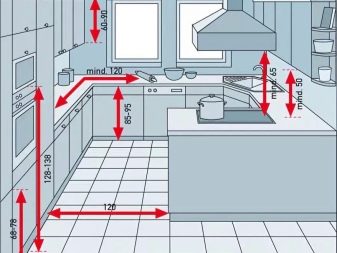
How to arrange furniture?
Planning an ergonomic kitchen space involves precise furniture placement. In order to equip a cozy and convenient room, it is necessary to take into account not only the color scheme or texture of the surface, but also the comfort for the people in it. The kitchen needs to be furnished so that at least two people can move freely in it.
Proper layout of the space involves placing the cabinets in such a way that even with the doors fully open, they do not interfere with the free passage. If the kitchen and dining room are combined in the interior, at least 75 cm should remain from extended chairs to the edge of the lower cabinets. And 80-90 cm should make up this passage when the seat is pushed back.
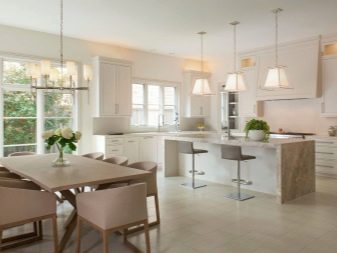
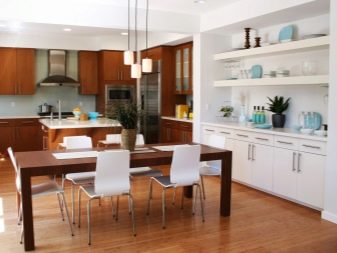

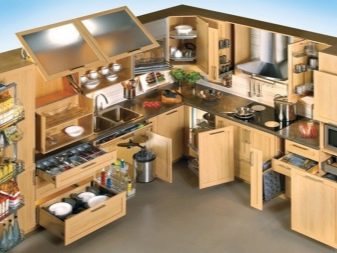
With a two-row or U-shaped layout between two parallel modules there can be at least 110 cm.
You must leave 100 cm or more of free space in front of the oven with a door that opens forward. The location of the working surface can be linear, at the same level or uneven.In this case, you can place the hob below the main countertop, and raise the sink 10 cm above it, making its use much more convenient, reducing the load on the back.


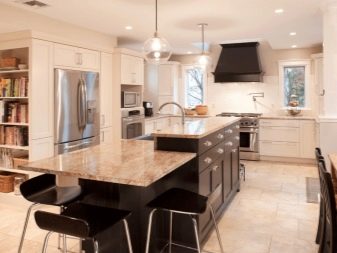
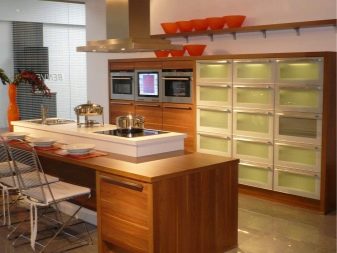
How to place household appliances?
To properly arrange household appliances, it is also worth considering certain rules. When arranging heating points, it is important to consider the proximity of work surfaces. So, the ergonomic arrangement of the oven, contrary to its typical installation, implies finding the door at shoulder level 10 cm below the collarbone. This allows you to control cooking without bending over. Accordingly, a gas or electric hob must be placed separately.
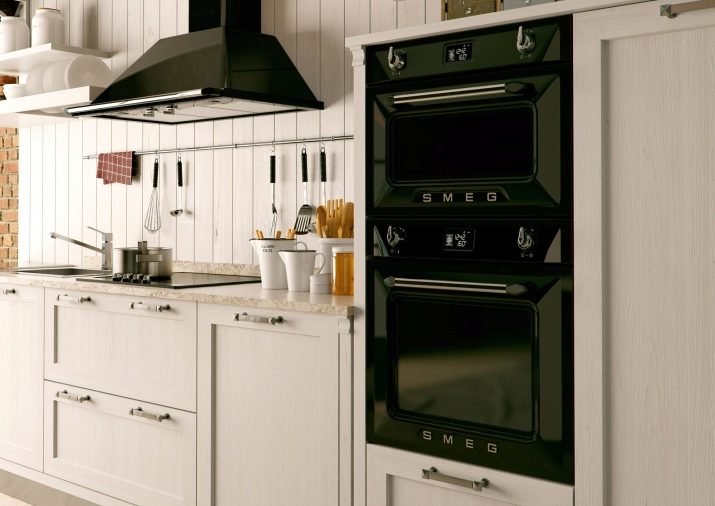
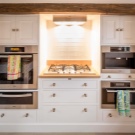
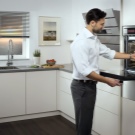
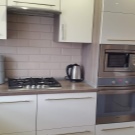
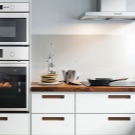
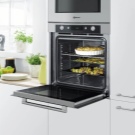
When choosing and installing a refrigeration unit, it is worth carefully calculating the volumes of the chambers.
In most cases, the lower location of the freezer or its removal by a separate module is convenient. The compact refrigerator can be placed at the same level as the oven, with a linear layout it will be placed above the countertop on the opposite side from the heat source. You can even make this zone outside the kitchen if it is not included in the list of key elements.
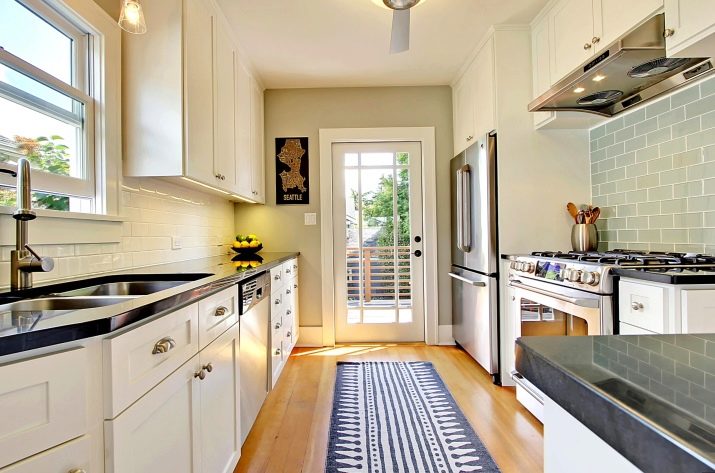
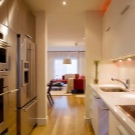
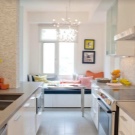
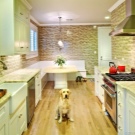

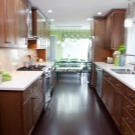
Storage of items, products and equipment
To make it more convenient to use the kitchen space, it is very important to organize in it the storage of all necessary supplies, accessories, utensils and equipment that are not used on an ongoing basis. So that everything you need is within reach, you need to make horizontal zoning from the very beginning, dividing all the blocks into:
- high;
- medium;
- low;
- very low.
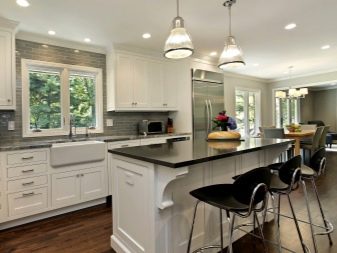

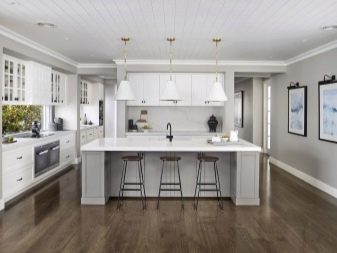
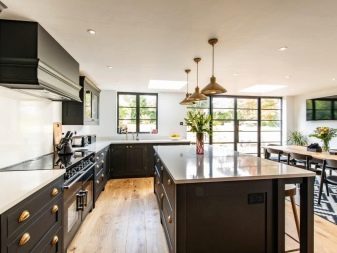
Out of free access are the first and last of these zones. The best visibility is provided at eye level - here it is convenient to arrange spices, supplies necessary for cooking. The main auxiliary objects are placed in the chest area - oven mitts, slotted shoes, scapula for turning, knives. It is convenient to place the storage system in this area on the wall.
The area of limited visibility is from 65 to 165 cm from the floor. It is here that the main shelves and cabinets are used to store dishes, cutlery, and built-in units are installed.
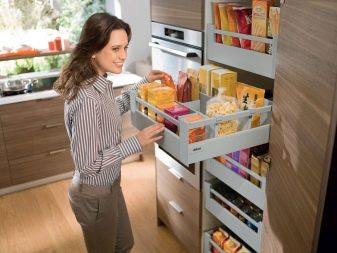
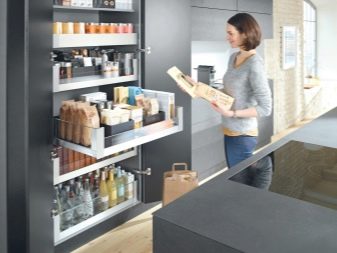

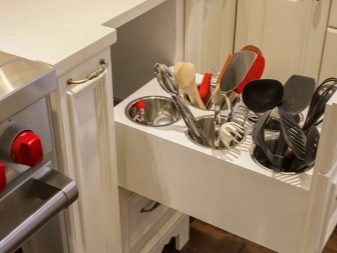
Outside these areas are blocks with the least availability. It stores items used most rarely. In the lower tier can be placed the most difficult things.
A convenient solution for storing small things are roof rails. It is on them that the elements that are needed in everyday life are fixed. Among the convenient and useful components of the storage system are:
- hooks placed in the working area;
- holders for tacks, they are next to the stove, but not in the immediate vicinity of the fire;
- the module with cells for spices is located in the apron area;
- cup holders, paper towel mounts, place near the sink.
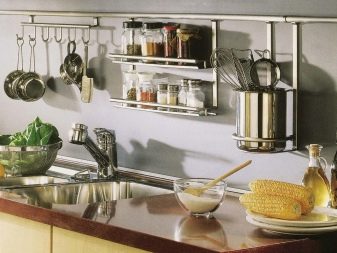
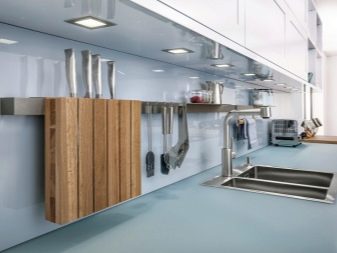
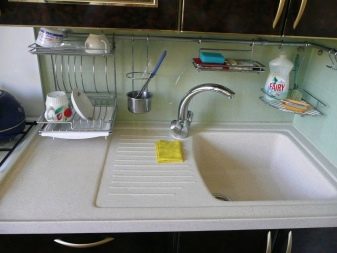
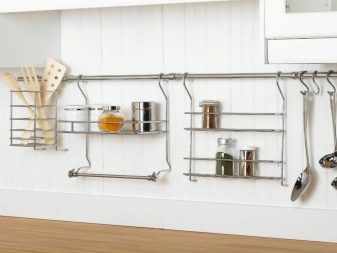
Recommendations
When planning an ergonomic kitchen, the following recommendations should be considered: allowing to make the room and the furnishings located in it even more convenient to use.
- When hanging the wall block of cabinets, it is necessary to take into account the growth of the hostess. Otherwise, the problem of contact between the forehead and the lower edge of the modules will be especially acute. For women with a height of at least 170 cm, this level should be at a height of 45 cm or more from the edge of the countertop.
- The hood should be located directly above the heat source, without bias. Powerful dome systems are needed only with the active use of the stove. In other cases, just a compact hood with a charcoal filter is enough. Above the gas stove it is installed 5-10 cm higher than over the electric one.
- Sources of heating - the oven, hob or stove should be located away from the aisle so that it is impossible to touch the dishes standing there or the open door.
- To prevent the fire from extinguishing accidentally when spraying water from the sink, you need to position the stove at least 40 cm from the sink and faucet. From the window, based on fire safety requirements, hobs and gas hobs are installed at a distance. It is enough to retreat 45 cm.
- To prevent accelerated wear on the hoses of dishwashers and washing machines, the flexible eyeliner should be made as short as possible. Accordingly, their ergonomic location will be as close to the risers.
- The refrigeration unit will last longer if it is not placed near sources of strong heat. In fact, subject to the rule of the triangle, such a situation is excluded.
- Even the right choice of fittings can increase the level of comfort. Closers installed on the doors will help to avoid loud pops, warping and breakage of the wings.
- Replacing swing doors and large shelves in the lower tier of cabinets with drawers allows you to make the use of this area more comfortable, increasing the overall capacity of the storage system.
- When choosing the filling of cabinets, it is imperative to give preference to modern "carousel" blocks, sliding modules and elevators. They save space, make it easy to access the most inconvenient areas of the storage system.
- In the upper row of cabinets it is better to choose the option of horizontal opening of the wings. In this case, when opened, you can immediately see all of their contents.
- Built-in lighting helps to better see the filling of cabinets in the upper and lower tiers. It is useful if the main light is directed to the work surface, and does not provide the necessary brightness.
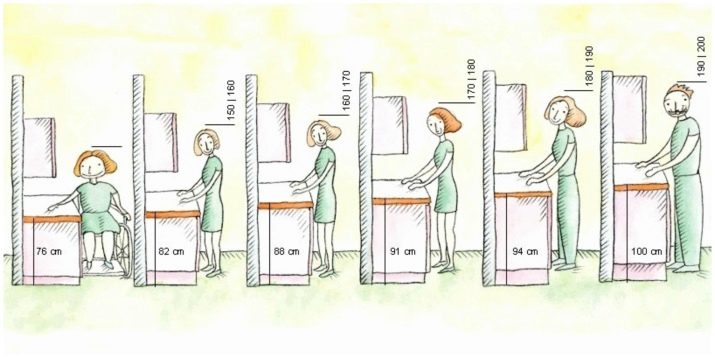
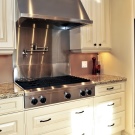


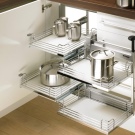
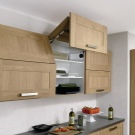
All these recommendations will ensure a truly ergonomic arrangement of the kitchen interior and greatly facilitate the life of every housewife.
Best examples
Here are some examples of ergonomic cuisine.
- Ergonomic Scandinavian-style kitchen. All elements are distributed as rationally as possible, do not interfere with free passage. Side open shelves provide convenient placement of frequently used items.

- Ergonomic kitchen with island. The triangle rule is still preserved, while all its elements are separate.

- A vivid example of a kitchen with multi-level countertops and a highly placed oven. All principles of ergonomics are observed, while the room looks stylish and modern.
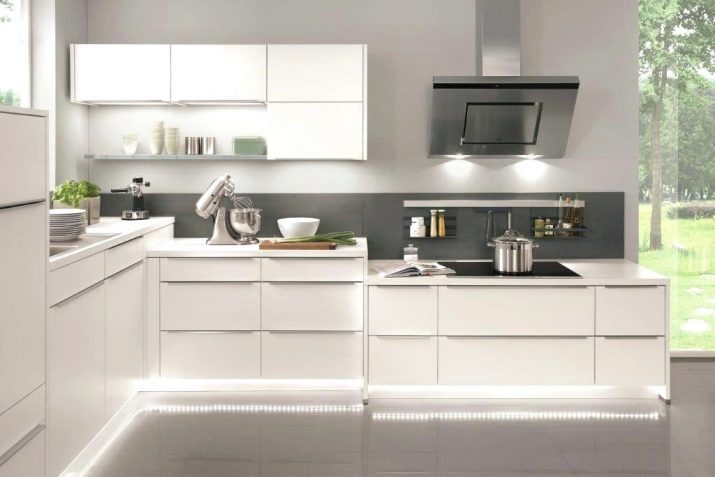
How to make the kitchen comfortable, see below.
